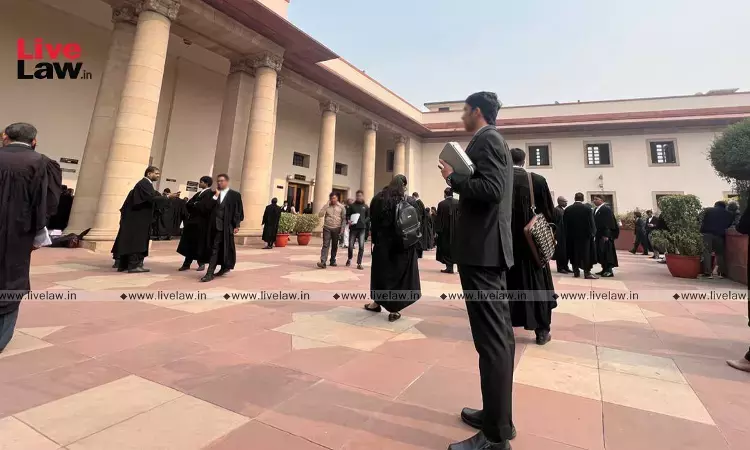
In the event that a bank or financial institution grants a loan to an individual or entity, it is essential that the institution takes appropriate measures to ensure that its "security interest" is protected. In addition to evaluating the creditworthiness of the borrower, securing the "security interest" is the most significant factor to consider when evaluating a loan application....
In the event that a bank or financial institution grants a loan to an individual or entity, it is essential that the institution takes appropriate measures to ensure that its "security interest" is protected. In addition to evaluating the creditworthiness of the borrower, securing the "security interest" is the most significant factor to consider when evaluating a loan application. "Security interest" refers to the debtor's right to allow the creditor to have recourse to the debtor's property if the debtor fails to make payments. In some cases, this security interest is protected by taking movable property, such as vehicles or machinery, as security in the form of a pledge or hypothecation. In other instances, immovable property, such as land, houses, or commercial buildings, is taken as security in the form of a mortgage. In the present case, the focus is on the impact on the bank's security interest in using any immovable property located in a forest area as security in light of the Supreme Court's judgment delivered on July 21, 2022, in Narendra Singh Vs. Divesh Bhutani (CA 10294 of 2013)[Hereinafter, Narendra Singh case]. The ruling provided much-needed clarity on the issue of permissions for using forest land for non-forest activities.
Ensuring the protection of security interest:
In situations where a bank provides loans against immovable property as collateral, it typically obtains a title investigation report or legal search report from its panel of lawyers. This report requires panel lawyers to conduct a legal search of the immovable property to ensure that there are no legal encumbrances on the property. For example, if a borrower uses their house as collateral, the advocate must verify the chain of title or ownership of the house for the previous 15 or 30 years, as well as the mutation of the property in the owner's name, building permission, and other factors. The purpose of obtaining such a report is to ensure that the bank's security interest is protected. This implies that if the borrower defaults on the loan agreement and fails to make repayments, the bank should be able to recover its dues by selling the mortgaged property according to the law.
How far can the Banks/financial institutions rely on the permissions of the Municipal authorities?
It is a well-established notion that, with respect to immovable property, permissions granted by municipal authorities, particularly in the form of building permissions, are considered to be the ultimate authorization. Advocates typically conduct searches of revenue records, and if the necessary municipal permissions and clear search in the revenue record are obtained, the property is deemed to be free from encumbrances. However, the judgment in Narendra Singh case is significant as it draws a fine distinction when it comes to obtaining proper permissions for the use of forest land for non-forest activities.
Prior permission of the Central Government necessary
The Supreme Court, in Narendra Singh case, settled a dispute over the use of forest land for non-forest activities, such as operating a wedding garden. The Court determined that while there is no complete restriction on the use of forest land for non-forest activities under the Forest Conservation Act, 1980, proper permission must be obtained from the Central Government under section 2 of the Act. The Court explicitly stated that any permission granted by the State government in this regard would not be considered valid unless there is prior permission from the Central Government recorded for the use of such forest land for non-forest activities.
Forest Land interpretation
To fully comprehend the ramifications of the Narendra Singh Case on the banking and finance industry, it is crucial to grasp the meaning of the term "forest land." The three-judge bench in the aforementioned case adopted a broader interpretation of the term "forest land" to include not only land notified as forest land in government records but also any land considered a forest based on the dictionary meaning of the term "forest" as elucidated by the Supreme Court in T.N. Godavarman Thirumulkpad vs. Union Of India. The Supreme Court clarified that a small isolated plot of land, even if it has some trees or thickets, would not be considered a forest. Instead, an extensive tract of land covered with dense growth of trees and underbrush or plants resembling a forest in profusion or lushness would be considered a forest. This interpretation aligns with the legislative intent of the Forest (Conservation) Act, 1980, which aims to promote development work on forest land to the extent it is sustainable while addressing environmental concerns. Furthermore, the Supreme Court stated that government records include not only revenue records but also records available in the forest department.
To understand the significance of the interpretation of section 2 of the 1980 Forest Conservation Act in the broader context of the definition of "forest," it is important to consider the implications for protecting a bank's security interest when forest land is used as collateral for a loan. Typically, banks accept immovable property as collateral to secure repayment of a loan, and borrowers may include individuals, partnerships, corporations, etc. When forest land or land that has forest characteristics is used as collateral, banks or financial institutions typically rely on permissions granted by local municipal authorities and land revenue records. These authorities are part of the state government, and if they consistently find no legal encumbrances without even considering the records of the forest department, clearance will likely be given to create a security interest through a mortgage or charge on the property. However, this approach creates potential problems.
A modern day problem with extra ordinary threats
In the present times, where there is a shortage of land in cities and builders are exploring spaces in close proximity to cities, it is possible that such builders may not seek permissions from the Central Government to expedite the completion of their projects. In such cases, banks and other financial institutions, in the face of existing competition in the market and business pressures, may also overlook the need to verify whether such permissions from the Central Government have been obtained. In addition, it would be unreasonable to expect customers or purchasers of flats to have specialized knowledge of the need for such permissions, particularly where such permissions are not obtained by the builders. As demonstrated in the Narendra Singh case, where the Apex Court ordered the removal of buildings and structures built on forest land without obtaining permission from the Central Government, similar orders can be issued in relation to structures or buildings, including housing projects, where immovable properties are kept as security by banks/financial institutions. This would lead to a situation where banks would be left with no security to recover their dues, rendering such secured loans unsecured. In such cases, if an account is classified as a Non-Performing Asset (NPA), banks would have to engage in litigation to recover their dues, which is a lengthy process, and even after obtaining a favourable order, banks/financial institutions may not be able to recover their dues due to the unavailability of security.
To prevent such situations, Banks/Financial Institutions should issue instructions to all their branches to exercise caution when approving loans against immovable property situated in forest land. In addition to the valuation report or title investigation report, officials from the Bank/Financial Institution should also visit the site and independently verify if the property has forest characteristics in the normal dictionary sense. When there is doubt about the location of the property, a No Objection Certificate (NOC) should be obtained from the District Forest Office (DFO) with respect to the land. In addition to discreetly inquiring about any legal disputes related to the property pending in the courts, efforts should also be made to determine whether there are any disputes pending in the National Green Tribunal. If such disputes are evident, the Bank/Financial Institution should not proceed with approving and disbursing the loan amount until proper permission under the Forest (Conservation) Act, 1980 is obtained. The purpose of the law is to balance the interests of all entities within its framework. No one entity should benefit at the expense of others' interests. The Narendra Singh Case has effectively sought to balance the interests of all parties, and it is the responsibility of all stakeholders to respect the Apex Court's mandate.




